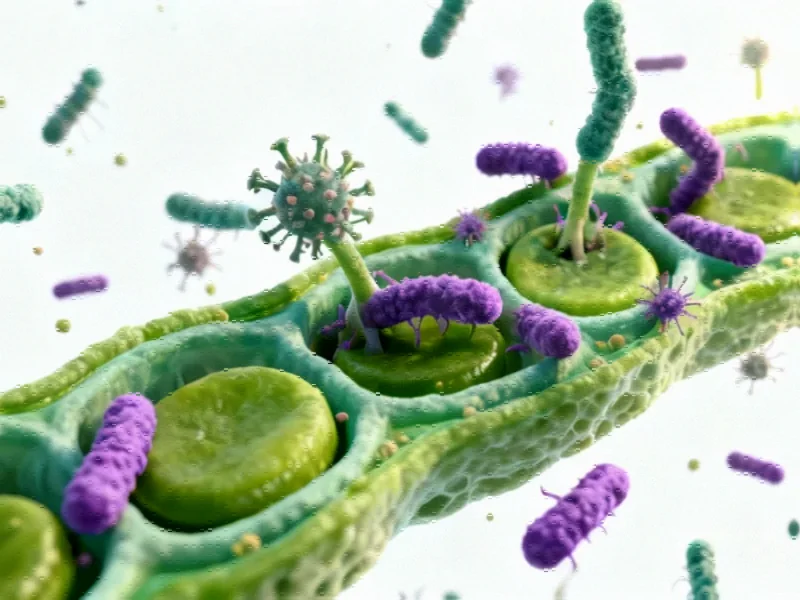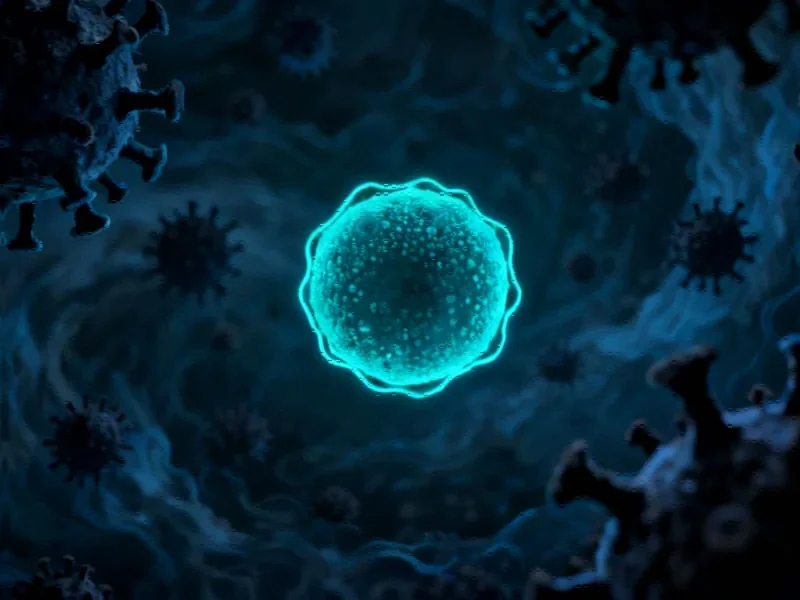The Hidden Battle in Plant Pathology
In the ongoing arms race between plants and pathogens, researchers have uncovered a sophisticated biochemical warfare strategy employed by oomycetes. These destructive microorganisms, responsible for devastating crop diseases worldwide, have evolved specialized enzymes that actively disarm plant defense signals by chemically modifying key immune-triggering molecules. This discovery represents a significant advancement in our understanding of plant-pathogen interactions and opens new avenues for developing targeted crop protection strategies.
Decoding the AA7 Enzyme Family
Through meticulous genomic analysis of Phytophthora infestans, the notorious culprit behind potato late blight, scientists identified five high-confidence genes encoding Auxiliary Activity family 7 (AA7) enzymes. These proteins, designated PiAA7A through PiAA7E, all carry predicted secretion signals and exhibit distinct expression patterns during infection. Transcriptomic data revealed that PiAA7A-C show strong induction throughout the infection process, while PiAA7D expression peaks early and PiAA7E remains relatively unchanged.
The evolutionary analysis uncovered fascinating specialization within this enzyme family. Phylogenetic examination across oomycetes with different lifestyles revealed four distinct clades with unique structural features. Clade I enzymes, which include the most strongly induced P. infestans isoforms, feature mono-covalent FAD binding and are expanded in plant pathogenic species. This clade’s members present a highly conserved patch of positively charged arginine residues surrounding the active site, suggesting specific adaptation for interacting with negatively charged substrates.
Biochemical Mechanism of Immune Sabotage
The research team expressed and purified recombinant PiAA7 enzymes to characterize their biochemical activity. Through comprehensive substrate screening, they discovered that all four tested isoforms exhibited specific and strong oxidase activity exclusively on oligogalacturonides (OGs)—fragments of pectin that serve as crucial damage-associated molecular patterns (DAMPs) in plant immunity.
Using advanced analytical techniques including MALDI-TOF MS and 1H-NMR, the researchers demonstrated that PiAA7 enzymes selectively oxidize OGs at the reducing end (C1 position). This modification fundamentally alters the chemical structure of these immune signaling molecules. The enzymes showed remarkable catalytic efficiency, with performance improving for longer OG chains, and exhibited complex kinetic behaviors including allosteric regulation and substrate inhibition depending on the specific isoform and substrate combination.
These findings represent a significant breakthrough in understanding how plant pathogens neutralize defense signals through sophisticated enzymatic mechanisms.
Consequences for Plant Immune Recognition
The critical question remained: what impact do these enzymatic modifications have on plant immunity? Experimental evidence demonstrated that PiAA7-oxidized OGs fail to trigger the characteristic reactive oxygen species (ROS) burst—a hallmark early immune response in plants. Native long OGs induced strong oxidative bursts in both Arabidopsis and tomato within minutes, while the oxidized versions showed dramatically reduced activity.
Even more revealing, co-treatment with native and oxidized OGs failed to trigger a full immune response, suggesting that the modified molecules actively interfere with the plant’s ability to perceive or respond to standard danger signals. This represents a novel microbial strategy for suppressing plant immunity that could have broad implications for understanding industry developments in agricultural technology and crop protection.
Cellular Localization and Infection Strategy
Using fluorescent protein tagging and confocal microscopy, researchers tracked PiAA7A localization during infection. The enzyme was found to accumulate at critical infection structures including sporangia germ tubes and haustoria—specialized feeding structures that form inside plant cells. This strategic positioning ensures that the enzyme is deployed precisely where it can most effectively intercept plant immune signals.
The timing of PiAA7 expression aligns perfectly with the pathogen’s infection strategy, with transcription rapidly increasing during the first three days of potato infection. This coordinated deployment suggests these enzymes play a crucial role in establishing and maintaining infection by creating a “stealth zone” around the invading pathogen.
Implications for Agricultural Innovation
This research opens multiple avenues for developing novel crop protection strategies. Understanding this molecular sabotage mechanism could lead to breeding crops with modified OG perception systems or developing enzyme inhibitors that block AA7 activity. The discovery also highlights the importance of monitoring recent technology failures in other sectors to appreciate the vulnerability of complex biological systems.
The specialized adaptation of these enzymes across different oomycete lineages suggests that similar mechanisms may operate in various plant-pathogen systems. This knowledge could inform the development of broad-spectrum protection strategies while contributing to our understanding of market trends in agricultural biotechnology.
Future Directions and Applications
The discovery of OG-oxidizing enzymes in plant pathogens represents a paradigm shift in how we understand microbial manipulation of host immunity. Future research will likely explore:
- Structural basis for substrate specificity and inhibition
- Engineering crop plants with resistant signaling systems
- Developing small-molecule inhibitors of AA7 enzymes
- Exploring similar mechanisms in other pathogen systems
These investigations align with broader related innovations in biological research and agricultural technology. As climate change and global trade increase plant disease pressures, such fundamental discoveries become increasingly valuable for ensuring food security and sustainable agriculture.
The sophisticated enzymatic strategy employed by oomycetes serves as a powerful reminder of the evolutionary arms race constantly unfolding in agricultural ecosystems. By understanding and countering these microbial tactics, we move closer to developing durable solutions for crop protection that could significantly impact global food production systems.
This article aggregates information from publicly available sources. All trademarks and copyrights belong to their respective owners.
Note: Featured image is for illustrative purposes only and does not represent any specific product, service, or entity mentioned in this article.



